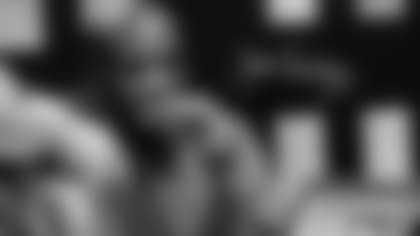When the subject of the Ravens' struggle to draft difference-making wide receivers came up at their pre-draft press conference earlier this month, GM Ozzie Newsome bristled mildly but didn't really issue a denial.
"We try, I try, but as a group, we try to learn from all of our mistakes," he said.
It's a well-trod subject. The Ravens have drafted 21 receivers in their history, including two in the first round, Travis Taylor in 2000 and Mark Clayton in 2005. Taylor and Clayton averaged43 catches per year as Ravens, but neither developed into the home run hitter the team desired. Third-round picks Devard Darling and Yamon Figurs also didn't materialize. Torrey Smith, a second-round pick in 2011, is the most impactful receiver the Ravens have drafted. Brandon Stokley and Jermaine Lewis also made plays. But overall, the Ravens' track record doesn't quite match their history at other positions.
With the 2015 NFL Draft set to unfold later this week, the Ravens could use a speedy wideout to replace Smith, who became a free agent and signed with the San Francisco 49ers in March. Most analysts think quality options will be available when Baltimore picks in the first round Thursday night as well as in the second and third rounds Friday night.
Arizona State's Jaelen Strong, Ohio State's Devin Smith and Central Florida's Breshad Perriman have been linked to the Ravens in first-round mock drafts, and as many as a dozen receivers in this class have first-round-caliber talent, according to Cris Collingsworth, the TV broadcaster and former NFL receiver, who is analyzing the draft in conjunction with the Pro Football Focus website.
Will the Ravens' spotty history at the position keep them from taking the plunge? No way. If their draft board points to them taking a receiver, they'll do it. "There are a lot of talented guys (in this class) and hopefully we can get one," Ravens Assistant GM Eric DeCosta said recently.
A chorus of "hmm" would ensue, but there's another way to analyze the team's history of drafting receivers, and it's not so concerning.
Consider: Other than Smith, the Ravens haven't drafted a receiver in the first three rounds since 2007.
Most of their draft history is pretty much ancient history when it comes to using high picks on receivers.
When they drafted Taylor, Joe Flacco was fifteen years old. Kyle Boller was a third-year starter when they took Clayton.
Yes, in recent years they have invested numerous picks on wideouts, but they were all third-day guys such as Tandon Doss in the fourth round, David Reed in the fifth round, Tommy Streeter in the sixth round and Aaron Mellette, Justin Harper and Michael Campanaro in the seventh round, only one of whom (Campanaro) remains on their roster. That's not the batting average they want, although they did score a hit in that time frame with an undrafted rookie free agent, Marlon Brown.
But going on the assumption that you get better players in higher rounds, the Ravens have barely even taken a swing at the wide receiver position in recent years. Since 2008, they have drafted six linebackers, five defensive backs, four offensive linemen, three defensive linemen, two tight ends, two running backs, one quarterback and one wide receiver with their picks in the first three rounds.
Not exactly a heavy investment in receivers.
Smith, the one receiver they did take, caught 213 passes for 3,591 yards and 30 touchdowns in four years, which, if not an all-out home run, was certainly an extra-base hit. So the Ravens actually succeeded with their only highly-drafted receiver since Flacco became their quarterback in 2008.
The insertion of Flacco in the equation is crucial. Before he came along, the Ravens lacked continuity under center. Taylor caught passes from Jeff Blake, Elvis Grbac and Boller. Mark Clayton caught passes from Boller, Steve McNair and a young Flacco. The Ravens ran a run-oriented offense in those years, which is not an excuse for their draft record regarding receivers, but does provide interesting context.
In a recent Baltimore Sun interview, Clayton reportedly just chuckled when asked if the Ravens offense was more conducive to developing receivers now than when he played.
In any case, with Flacco in his prime and a super-deep draft class of receivers set to come off the board later this week, the framework seemingly is in place for the Ravens to score a hit at a position where they have barely taken swings in recent years.


















